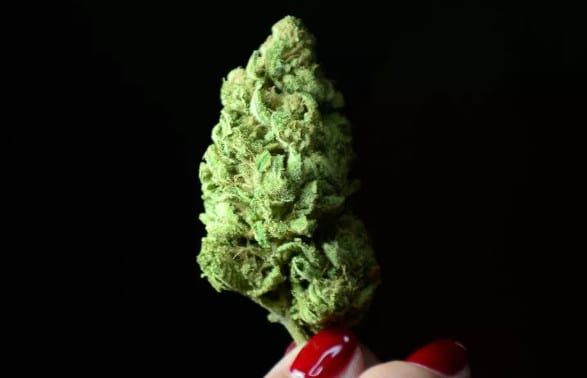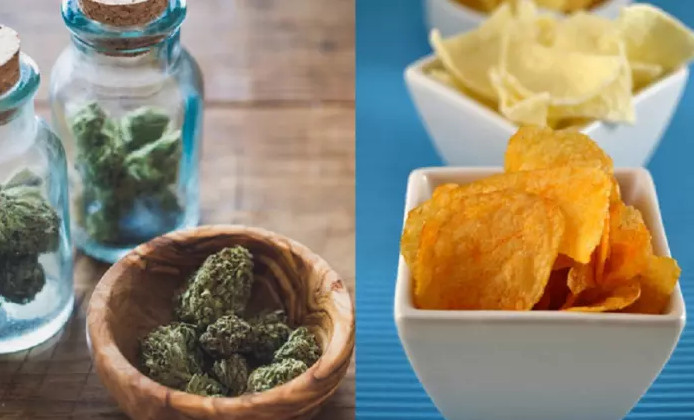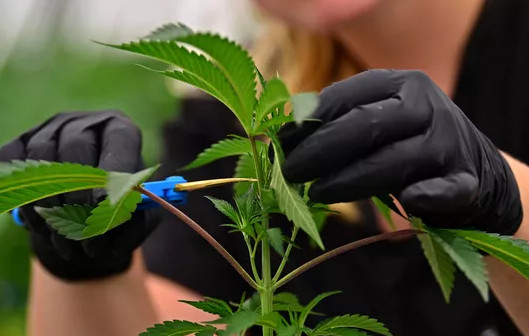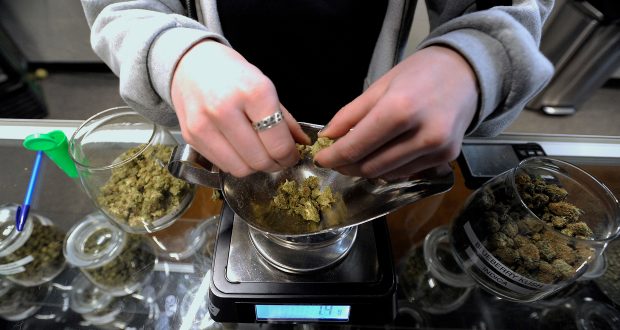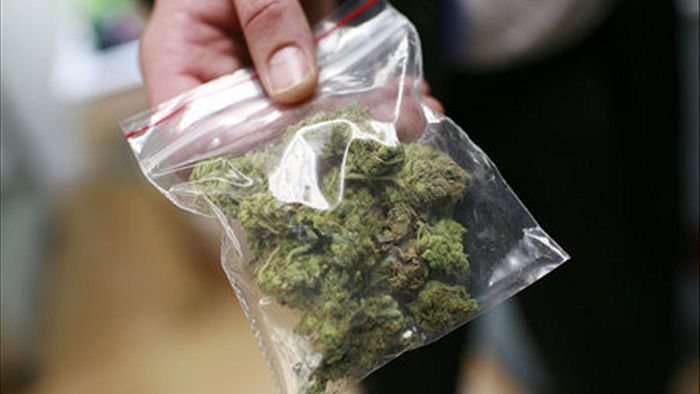IF YOU GO to a doctor and ask them to recommend you medical marijuana, don’t expect them to fully understand how the drug works, both for you as an individual patient and in general as a therapy. Because no one really does.
With more and more states legalizing marijuana for medical or recreational use, cannabis is shedding its stigma and entering the mainstream. That means folks who’ve shied away from the stuff are getting better access, and exploring cannabis as a non-addictive treatment for ailments like pain. But that new interest is running smack dab into a big problem plaguing medical cannabis: The research on what marijuana can actually treat, what components of the plant matter, and how different patients respond to them, is severely lacking.
Just how much doctors are struggling with it becomes clear today in the Journal of Clinical Oncology. A study reveals that half of surveyed oncologists say they recommended marijuana to patients in the last year. But half of those didn’t think they actually had sufficient knowledge to make those recommendations.
The biggest question for oncologists is what cancer symptoms cannabis can really treat. The survey found respondents split when it comes to the treatment of pain: A third of oncologists said cannabis is equally or more effective than standard pain treatments, a third said it was less effective, and a third didn’t know. “But there seemed to be clear consensus that medical marijuana is a good adjunctto standard pain treatment, so a good add-on medication,” says Ilana Braun, lead author and chief of Dana-Farber Cancer Institute’s Division of Adult Psychosocial Oncology. In fact, two-thirds of respondents said it’d be a good supplemental treatment.
According to the National Academies of Sciences, Engineering, and Medicine—which last year published a massive, big-deal review of cannabis research—“there is substantial evidence that cannabis is an effective treatment for chronic pain in adults.” It’s also been shown to help control nausea and vomiting.
Now, doctors have long prescribed a synthetic THC called dronabinol, aka marinol, for the treatment of nausea and weight loss. Problem is, side effects include paranoia and “thinking abnormal.” Beyond that, you wouldn’t want to try to get high on it because it’s missing the galaxy of other active compounds in cannabis. “If it worked—it rarely does work—but if it really did work it would be abused on the streets,” says physician Allan Frankel, a pioneer in medical cannabis. “For 15 cents a pill? That’s how bad marinol is.”
The reason, Frankel says, is the so-called entourage effect, the interaction of dozens of other cannabinoids in marijuana like CBD (which is an extremely effective treatment for seizures, by the way) that may produce different therapeutic effects. So by that logic, with marinol, patients aren’t getting the full effect of the cannabis plant.
And that full effect would be? Well, nobody really knows—in part because the US government makes the stuff very, very difficult to study. In the eyes of the feds, it’s still a very illegal schedule I drug, the most tightly controlled category, and the DEA decides who gets crop to research. Researchers don’t have access to a variety of strains that might produce a variety of benefits, given different levels of CBD and THC and other compounds.
Even if you could study lots of different strains, it’s not always possible to tell what a patient is going to get at the dispensary. Flowers can be mislabeled, and the THC content of oils doesn’t always match what’s on the label. “Composition standardization is a giant mess,” says Jeff Raber, CEO of the Werc Shop, a lab that tests cannabis. “So for an ultra traditional doctor, I can understand where they’re like, Man, we don’t really know what that is, is that OK? It’s not standardized like a pharmaceutical product.”
A doctor can’t just say, Take two marijuana pills and call me in the morning. And on a physiological level, we all handle cannabis differently. “Even if I tell everybody, go inhale a tenth of a gram, their inhalation depths and absorption rates are going to be different,” says Raber.
“Unfortunately, we are going a little bit blind,” says physician Bonni Goldstein, medical director of the Canna-Centers, which provides cannabis consultations for patients. “But what I’m finding in clinical experience is I learn from every patient, and so we try to use the scientific research that we do have.”
So doctors like Goldstein try to tailor cannabis as best they can for a patient’s needs. Her patients have the luxury of attentive, personalized cannabis consultations. “Someone retired who has cancer who doesn’t have to get up in the morning and get somewhere may be able to take bigger doses during the day,” says Goldstein, “versus a mom of four who has kids in and out of activities, who has breast cancer.”
But your typical oncologist isn’t going to sit down with a patient for an hour to walk through their lifestyle and needs. So patients are left to experiment with dosages on their own, or consult with their local dispensary.
Because it turns out that dispensaries have some experience dosing cannabis. “Some of the top dispensaries that have been doing this for a while know this better than anybody else,” says Rob Adelson, president and CEO of Resolve, which makes a smart inhaler for medical marijuana patients. “There’s still so much about the pharmacokinetics of this plant that we just don’t know yet. So asking a doctor to come in to try to solve the problem without any more data than the dispensary has is hard.”
What Adelson sees cannabis promoting is a new paradigm of medical care. “We’ve heard this from many doctors, that they might not know about medical cannabis, might not want to promote it, and that a patient comes in and says, ‘I’d like to try it,’” he says. “And patients bring studies with them.” That inversion of responsibility has its downsides: An elderly patient might not be aware of side effects like dizziness, for example. But at the same time, it’s impossible to overdose. For better or worse, if doctors don’t feel they have the knowledge to appropriately prescribe a drug, patients will fill that void.
More cannabis science
- Another big unknown with cannabis is the issue of safety. Namely, the stuff that’s grown in the wilds of California can be very, very dirty.
- Take a deeper dive into why it’s so hard to properly dose marijuana.
- Again, please never drive stoned, ever, even if it’s currently impossible to determine just how intoxicated you are.
Credit: wired.com



